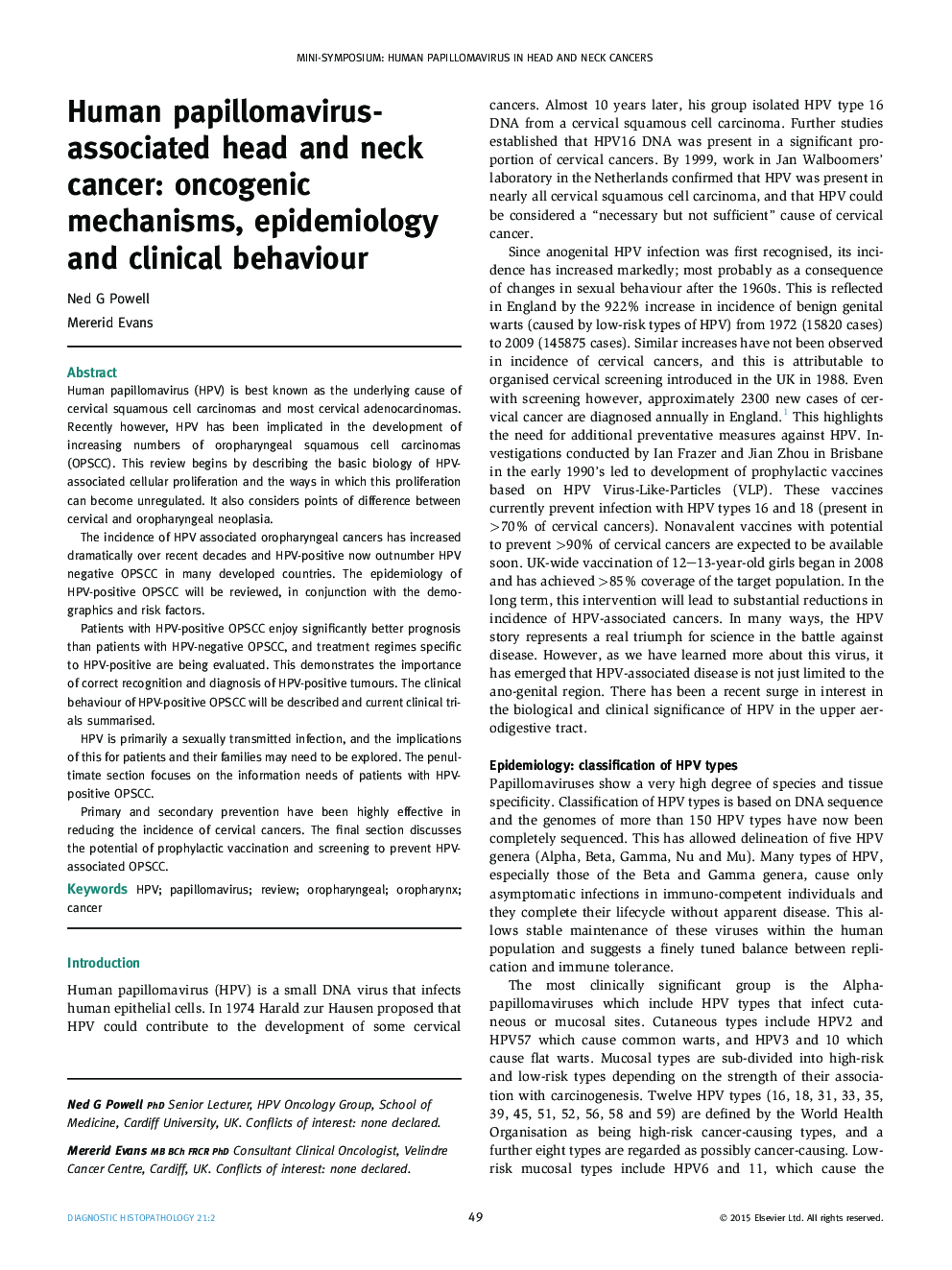| Article ID | Journal | Published Year | Pages | File Type |
|---|---|---|---|---|
| 4131061 | Diagnostic Histopathology | 2015 | 16 Pages |
Human papillomavirus (HPV) is best known as the underlying cause of cervical squamous cell carcinomas and most cervical adenocarcinomas. Recently however, HPV has been implicated in the development of increasing numbers of oropharyngeal squamous cell carcinomas (OPSCC). This review begins by describing the basic biology of HPV-associated cellular proliferation and the ways in which this proliferation can become unregulated. It also considers points of difference between cervical and oropharyngeal neoplasia.The incidence of HPV associated oropharyngeal cancers has increased dramatically over recent decades and HPV-positive now outnumber HPV negative OPSCC in many developed countries. The epidemiology of HPV-positive OPSCC will be reviewed, in conjunction with the demographics and risk factors.Patients with HPV-positive OPSCC enjoy significantly better prognosis than patients with HPV-negative OPSCC, and treatment regimes specific to HPV-positive are being evaluated. This demonstrates the importance of correct recognition and diagnosis of HPV-positive tumours. The clinical behaviour of HPV-positive OPSCC will be described and current clinical trials summarised.HPV is primarily a sexually transmitted infection, and the implications of this for patients and their families may need to be explored. The penultimate section focuses on the information needs of patients with HPV-positive OPSCC.Primary and secondary prevention have been highly effective in reducing the incidence of cervical cancers. The final section discusses the potential of prophylactic vaccination and screening to prevent HPV-associated OPSCC.
